A New Coking Coal Charging Method for 6 m Top-Charged Coke Oven: System Design and Experiment
Abstract
:1. Introduction
- (1)
- Choose suitable high-temperature resistant materials.
- (2)
- Design an experimental study of a new coal charging device based on the 6 m industrial top-charged coke oven. Then, run the device in the cold mode and no coal charging conditions; observe and research the feasibility of the device in terms of mechanical properties.
- (3)
- During coal charging with the new equipment, the dust emission and distribution range were tested and simulated, and compared with the traditional top charging method.
- (4)
- During coal charging with the new equipment, the transportation mode of coal was analyzed to explore the laws and control conditions of different phase flow.
- (5)
- The influence of controllable factors on the accumulation characteristics of coal was studied, then necessary conditions of optimal repose angle and bulk density were determined.
- (6)
- The prediction model of accumulating characteristics during coking coal charging was established.
2. Materials and Methods
2.1. Experiment Materials and Equipment
2.1.1. Materials
2.1.2. Experimental Instruments
2.1.3. Coal Charging Equipment
2.2. Methods
2.2.1. Equipment Principle and Operation
Design Ideas and Schemes
- (1)
- Establish a new method and technology for low moisture coal into furnace.
- (2)
- The high temperature of the coking chamber needs high requirements for equipment.
- (3)
- Simplified equipment structure, easy operation.
- (4)
- Low dust emission in the coal charging process
- (5)
- Convenient feeding and continuous charging.
- (6)
- Good accumulation effect at the bottom of the coking chamber.
- (7)
- The flow of coal towards the length of the coking chamber to reduce its pressure on the furnace wall.
Operating Principle and Equipment Characteristics
- (1)
- The coal charging system is compact and simple.
- (2)
- The bottom of the cylinder is provided with a guide plate. The coal can flow along the length of the coking chamber, reduce the pressure of coal accumulation towards the width of the furnace wall, and form a better accumulation effect; the details are in Figure 5.
- (3)
- The cylinder is a single-layer wall, a sliding block and a sliding groove are arranged between the adjacent cylinders. A large diameter cylinder might be moved up or down along the axis of a small diameter cylinder.
- (4)
- The top of the cylinder is provided with a reinforcing rib, which can prevent the cylinder from easily deforming.
Key Parts Design and Selection
2.2.2. Characteristics of the Coal Transport with the New Charging Method
2.2.3. Dust Emission and Distribution during Charging
2.2.4. Repose Angle
2.2.5. Bulk Density
2.2.6. Design of Experimental Scheme for Optimization of Coal Accumulation
3. Results and Discussion
3.1. Selection of High-Temperature Resistant Materials
3.2. The Characteristics of Transport during Coking Coal Charging
3.3. Dust Emission and Distribution Characteristics during Coal Charging
3.3.1. Dust Emission
3.3.2. Distribution Characteristics of Coal Dust
3.3.3. Velocity Distribution of Dust at Various Points during Cylinder Lifting Process
3.4. Accumulation Characteristics in the Coking Chamber after Coal Charging
3.4.1. Repose Angle
3.4.2. Bulk Density
3.4.3. The Conditions of the Optimal Accumulation State of Coking Coal
3.4.4. Analysis of Range
3.4.5. Analysis of Variance
3.4.6. The Establishment of the Prediction Model of Accumulation Characteristics
4. Conclusions
- (1)
- True strain values of the material increased with the extension of heating time, but the overall increase trend was slow, when the thickness of the metal material exceeded 2.5 mm, the decrease amplitude weakened, and the strain value decreased with time and tended to be stable. It was more appropriate to select 310 austenitic chromium nickel stainless steel as the meterials of cylinder.
- (2)
- Satisfies the condition that the coal transporting process with dense phase—the moisture content was 3%, the lifting speed of the cylinder was 0.02 m/s, satisfied this condition; the needs the distribution range of screw feeding speed was [0.38,0.50]; when the moisture content was 5%, and the distribution range of speed was [0.31,0.50].
- (3)
- Compared with the traditional coal charging method, the dust emission from the new charging method was reduced by 90% at the peak of dust emission.
- (4)
- The optimal combination of control conditions corresponding to the bulk density was A5B1C1D2 (particle size distribution was 0.9~2 mm; coal moisture content was 3%; cylinder lifting speed was 0.02 m/s, blanking height was 0.2 m). Optimal combination of repose angle A5B5C2D1 (particle size distribution was 0.9~2 mm; moisture content was 11%; cylinder lifting speed was 0.04 m/s, and blanking height was 0.1 m).
- (5)
- The prediction model of accumulation characteristics was established through experiments, and the accuracy of the model was verified by experiments.
Author Contributions
Funding
Institutional Review Board Statement
Informed Consent Statement
Acknowledgments
Conflicts of Interest
References
- Cui, P.; Qu, K.-L.; Ling, Q.; Cheng, L.-Y.; Cao, Y.-P. Effects of coal moisture control and coal briquette technology on structure and reactivity of cokes. Coke Chem. 2015, 58, 162–169. [Google Scholar] [CrossRef]
- Gao, B.; Li, Y.G.; Chen, P.; Kong, D.W. Application and effect analysis of CMC in coking plant. Fuel Chem. Process. 2016, 47, 31–33. [Google Scholar]
- Liang, K.; Chao, C.; Zhu, Q.; Wu, J.; Liu, D. Development and application of coal moisture control technology in coking process. Angang Technol. 2017, 1, 6–11. [Google Scholar]
- Díez, M.; Alvarez, R.; Barriocanal, C. Coal for metallurgical coke production: Predictions of coke quality and future requirements for cokemaking. Int. J. Coal Geol. 2002, 50, 389–412. [Google Scholar] [CrossRef]
- Li, J.W. Development and application of coal moisture control technology in coking process. Chem. Enterp. Manag. 2019, 1, 67–68. [Google Scholar]
- Zheng, W.H. Coal Preheating and Moisture Control in Muroran Coking Plant, Japan. Fuel and Chemical Processes. 2002, 33, 1–3. [Google Scholar]
- Li, S.; Li, X. Development and Application of Coal Moisture Control Technology at Home and Abroad. Dry. Technol. Equip. 2010, 8, 249–255. [Google Scholar]
- Li, J. Development of Coal Moisture Control Technology and Its Application in Coking Plant. Coal Chem. Ind. 2005, 1, 34–36. [Google Scholar]
- Su, X.; Jiang, L.; Li, X.; Kong, X.; Sun, B. Problems and improvement of charging emission control technologyfor top-charging coke oven. Fuel Chem. Process. 2015, 46, 20–23. [Google Scholar]
- Copeland, C.; Eisele, T.C.; Kawatra, S. Suppression of airborne particulates in iron ore processing facilities. Int. J. Miner. Process. 2009, 93, 232–238. [Google Scholar] [CrossRef]
- Copeland, C.R.; Eisele, T.C.; Chesney, D.J.; Kawatra, S.K. Factors influencing dust suppressant effectiveness. Min. Met. Explor. 2008, 25, 215–222. [Google Scholar] [CrossRef]
- Dong, K.J. Study on Fluidized Bed Particle Grading Characteristics of Coking Coal; Huazhong University of Science and Technology: Wuhan, China, 2017. [Google Scholar]
- Fang, R. The Integration Study on Coking Coal Moisture Control and Classification in Vibration Fluidized Bed; Northeastern University: Liaoning, China, 2012. [Google Scholar]
- Chen, Q.; Hu, J.; Yang, H.; Wang, D.; Liu, H.; Wang, X.; Chen, H. Experiment and simulation of the pneumatic classification and drying of coking coal in a fluidized bed dryer. Chem. Eng. Sci. 2020, 214, 115–364. [Google Scholar] [CrossRef]
- Wang, Y.; Wang, Y.-Y.; Zhang, S. Effect of drying conditions on moisture re-adsorption and particulate matter emissions during the classification drying of coking coal. Fuel Process. Technol. 2019, 192, 65–74. [Google Scholar] [CrossRef]
- Bu, X.; Chen, Y.; Ma, G.; Sun, Y.; Ni, C.; Xie, G. Differences in dry and wet grinding with a high solid concentration of coking coal using a laboratory conical ball mill: Breakage rate, morphological characterization, and induction time. Adv. Powder Technol. 2019, 30, 2703–2711. [Google Scholar] [CrossRef]
- Li, J.; Pradhan, S.U.; Wassgren, C. Granule transformation in a twin screw granulator: Effects of conveying, kneading, and distributive mixing elements. Powder Technol. 2019, 346, 363–372. [Google Scholar] [CrossRef]
- Dos Santos, D.A.; Duarte, C.; Barrozo, M.A.S. Segregation phenomenon in a rotary drum: Experimental study and CFD simulation. Powder Technol. 2016, 294, 1–10. [Google Scholar] [CrossRef]
- Yari, B.; Beaulieu, C.; Sauriol, P.; Bertrand, F.; Chaouki, J. Size segregation of bidisperse granular mixtures in rotating drum. Powder Technol. 2020, 374, 172–184. [Google Scholar] [CrossRef]
- Wang, H.; Fotovat, F.; Bi, X.T.; Grace, J.R. Tribo-charging of binary mixtures composed of coarse and fine particles in gas–solid pipe flow. Particuology 2019, 43, 101–109. [Google Scholar] [CrossRef]
- Feng, B.B.; Tang, Z.N. Behavior of Fugitive Dust in the Process of Filling Powder in the Bags. Packag. Eng. 2017, 38, 105–109. [Google Scholar]
- Seyfi, S.; Mirzayi, B.; Seyyedbagheri, H. CFD modeling of black powder particles deposition in 3D 90-degree bend of natural gas pipelines. J. Nat. Gas Sci. Eng. 2020, 78, 103330. [Google Scholar] [CrossRef]
- Susanti, N.; Grosshans, H. Measurement of the deposit formation during pneumatic transport of PMMA powder. Adv. Powder Technol. 2020, 31, 3597–3609. [Google Scholar] [CrossRef]
- Song, X.N. Construction of a New Type of Coal Moisture Control Technology Based on the Characteristics of Indirect Heat and Mass Transfer Process in Coking Coal; Tianjin University: Tianjin, China, 2018. [Google Scholar]
- Filali, A.; Khezzar, L.; Alshehhi, M.; Kharoua, N. A One-D approach for modeling transport and deposition of Black Powder particles in gas network. J. Nat. Gas Sci. Eng. 2016, 28, 241–253. [Google Scholar] [CrossRef]
- Zhang, J.; Yang, L.; Zhang, W.; Qiu, J.; Xiao, H.; Liu, Y. Numerical simulation and experimental study for aerodynamic characteristics and powder transport behavior of novel nozzle. Opt. Lasers Eng. 2020, 126, 105873. [Google Scholar] [CrossRef]
- Jin, Y.; Liu, H.-F.; Guo, X.; Gong, X. Characteristics and formation mechanism of plug flow in the industrial vertical pipeline of dense-phase pneumatic conveying of pulverized coal. Chem. Eng. Sci. 2019, 205, 319–331. [Google Scholar] [CrossRef]
- Liu, T.; Liu, S. The impacts of coal dust on miners’ health: A review. Environ. Res. 2020, 190, 109849. [Google Scholar] [CrossRef] [PubMed]
- Al-Hashemi, H.M.B.; Al-Amoudi, O.S.B. A review on the angle of repose of granular materials. Powder Technol. 2018, 330, 397–417. [Google Scholar] [CrossRef]
- Guo, Z.; Chen, X.; Liu, H.; Guo, Q.; Guo, X. Theoretical and experimental investigation on angle of repose of biomass–coal blends. Fuel 2014, 116, 131–139. [Google Scholar] [CrossRef]
- Holsapple, K.A. Modeling granular material flows: The angle of repose, fluidization and the cliff collapse problem. Planet. Space Sci. 2013, 82–83, 11–26. [Google Scholar] [CrossRef]
- Wójcik, A.; Klapa, P.; Mitka, B.; Sladek, J. The use of the photogrammetric method for measurement of the repose angle of granular materials. Measurement 2018, 115, 19–26. [Google Scholar] [CrossRef]
- Chen, H.; Zhao, S.; Zhou, X. DEM investigation of angle of repose for super-ellipsoidal particles. Particuology 2020, 50, 53–66. [Google Scholar] [CrossRef]
- Yu, A.B.; Standish, N.; Lu, L. Coal agglomeration and its effect on bulk density. Powder Technol. 1995, 82, 177–189. [Google Scholar] [CrossRef]
- Liu, Y.; Wu, R.; Yang, P.; Wang, T.; Liu, H.; Wang, L. Parameter study of the injection configuration in a zero boil-off hydrogen storage tank using orthogonal test design. Appl. Therm. Eng. 2016, 109, 283–294. [Google Scholar] [CrossRef]
- Li, X.; Hao, J.-Y. Orthogonal test design for optimization of synthesis of super early strength anchoring material. Constr. Build. Mater. 2018, 181, 42–48. [Google Scholar] [CrossRef]
- Lin, R.; Diao, X.; Ma, T.; Tang, S.; Chen, L.; Liu, D. Optimized microporous layer for improving polymer exchange membrane fuel cell performance using orthogonal test design. Appl. Energy 2019, 254, 1–9. [Google Scholar] [CrossRef]
- Krotov, D.S. On the OA(1536,13,2,7) and related orthogonal arrays. Discret. Math. 2020, 343, 111659. [Google Scholar] [CrossRef]
- Ranil, R.; Niran, H.; Plazas, M.; Fonseka, R.; Fonseka, H.; Vilanova, S.; Andujar, I.; Gramazio, P.; Fita, A.; Prohens, J. Improving seed germination of the eggplant rootstock Solanum torvum by testing multiple factors using an orthogonal array design. Sci. Hortic. 2015, 193, 174–181. [Google Scholar] [CrossRef] [Green Version]
- Sun, W.Z.; Hu, D.S. Analysis of factors influencing coking coal’s bulk density. Baosteel Technol. 2012, 2, 10–14. [Google Scholar]
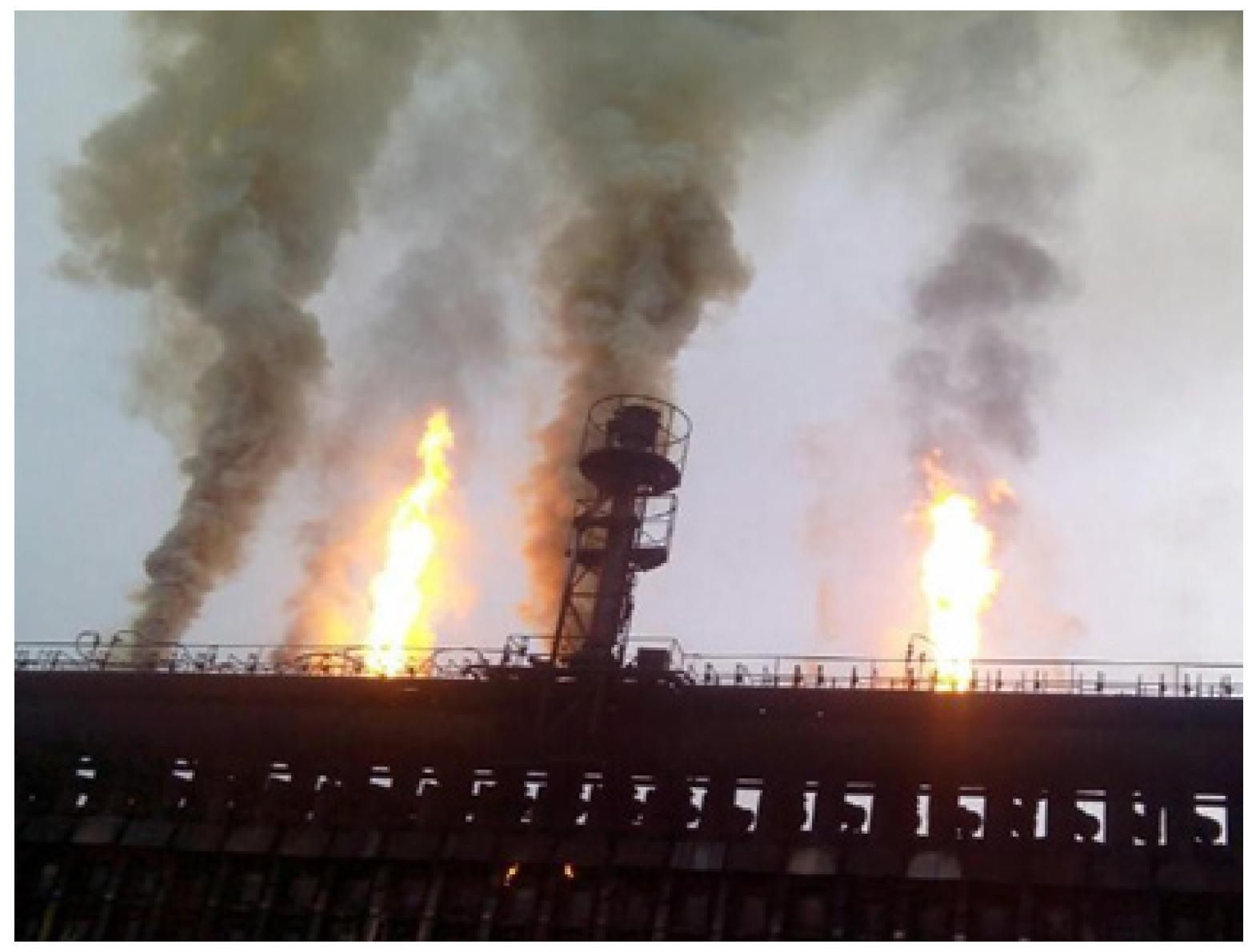




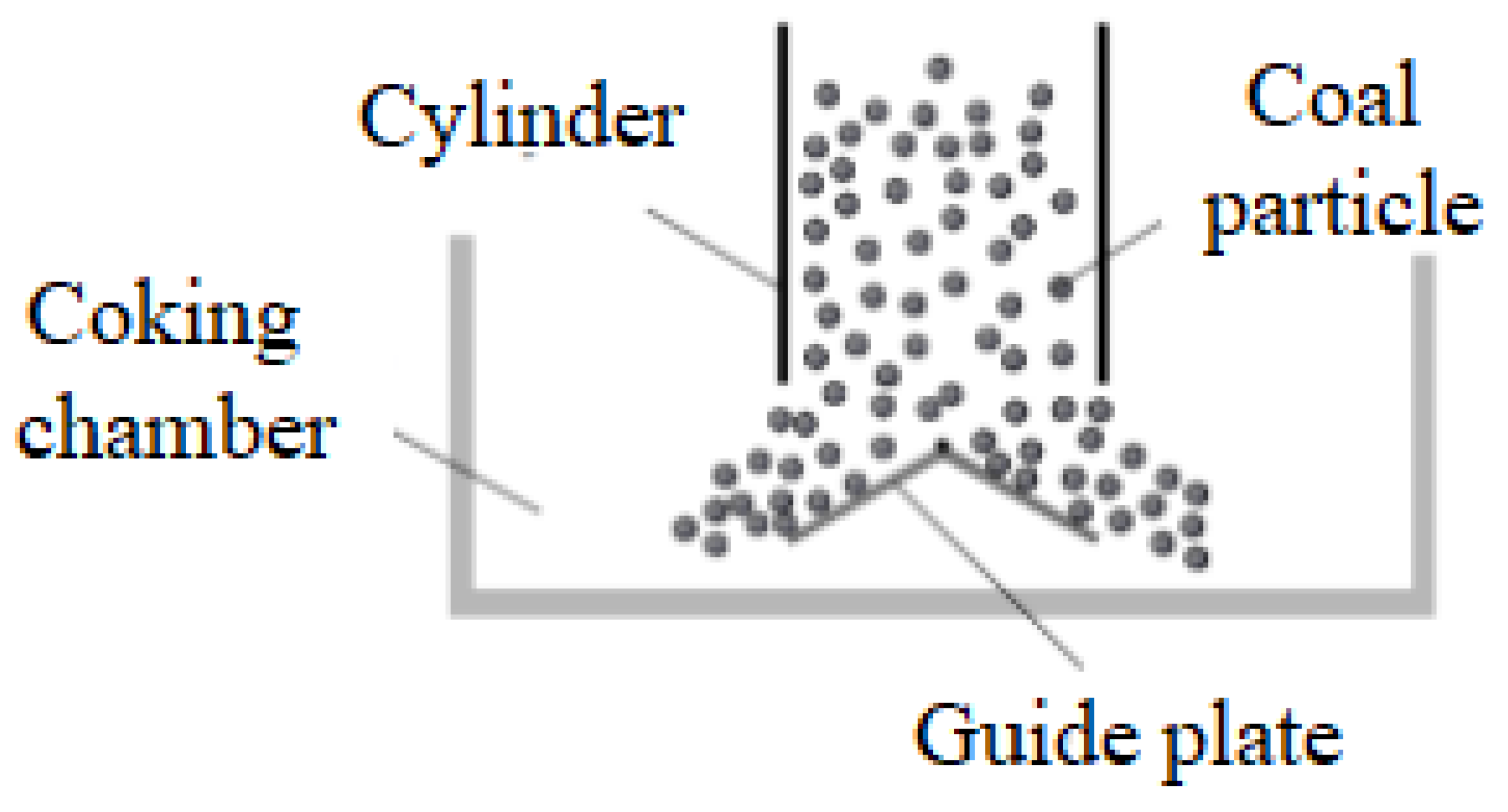
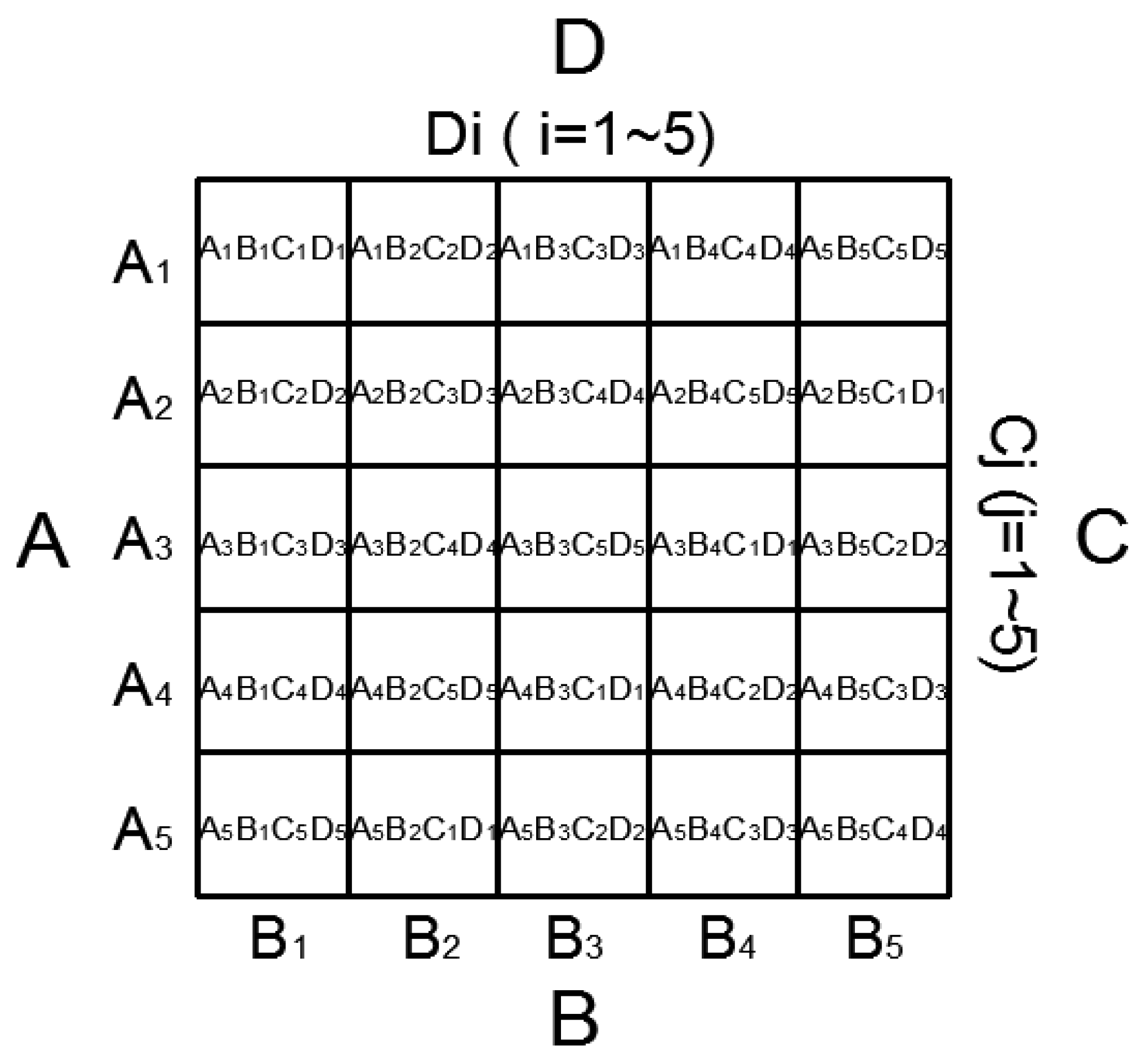
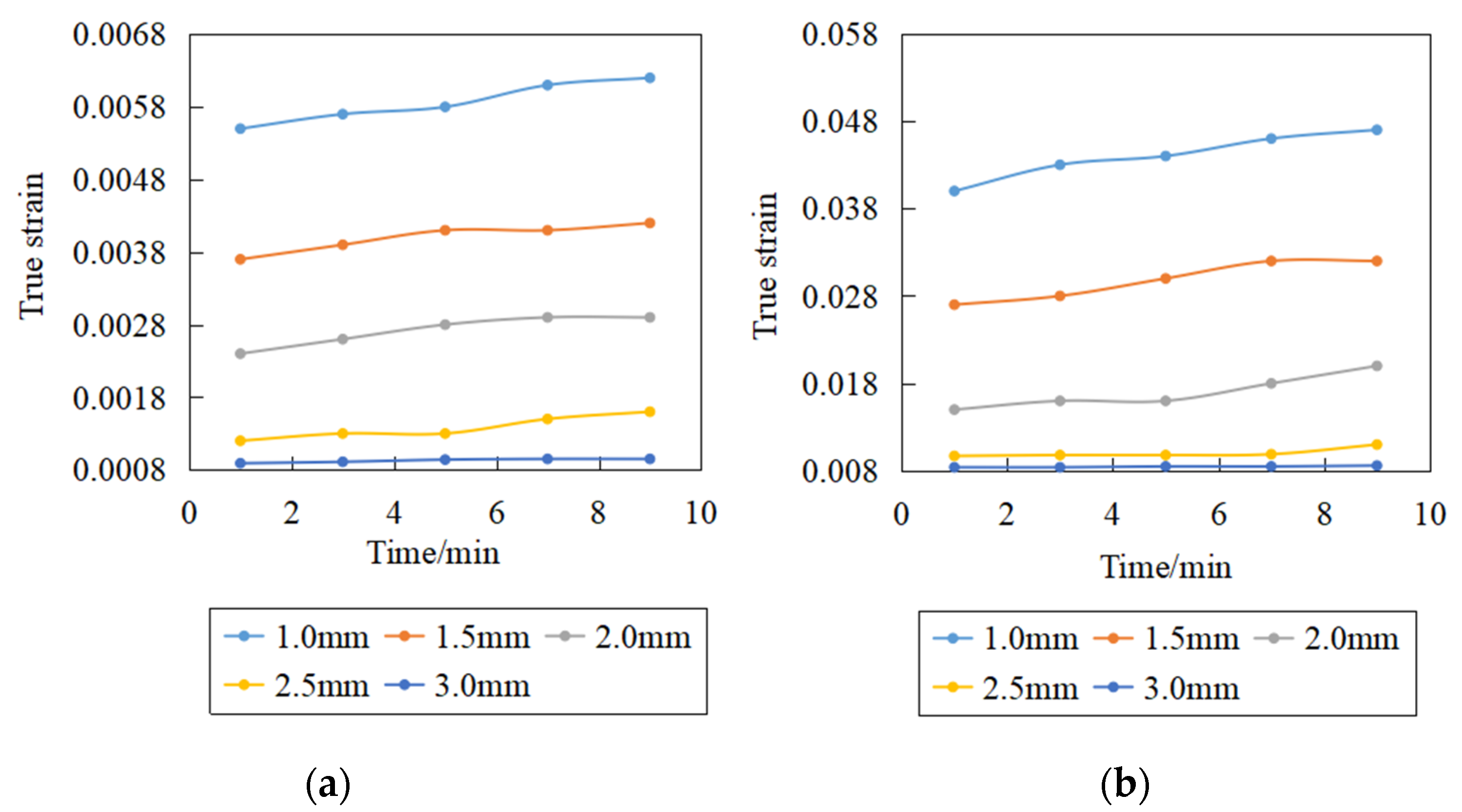


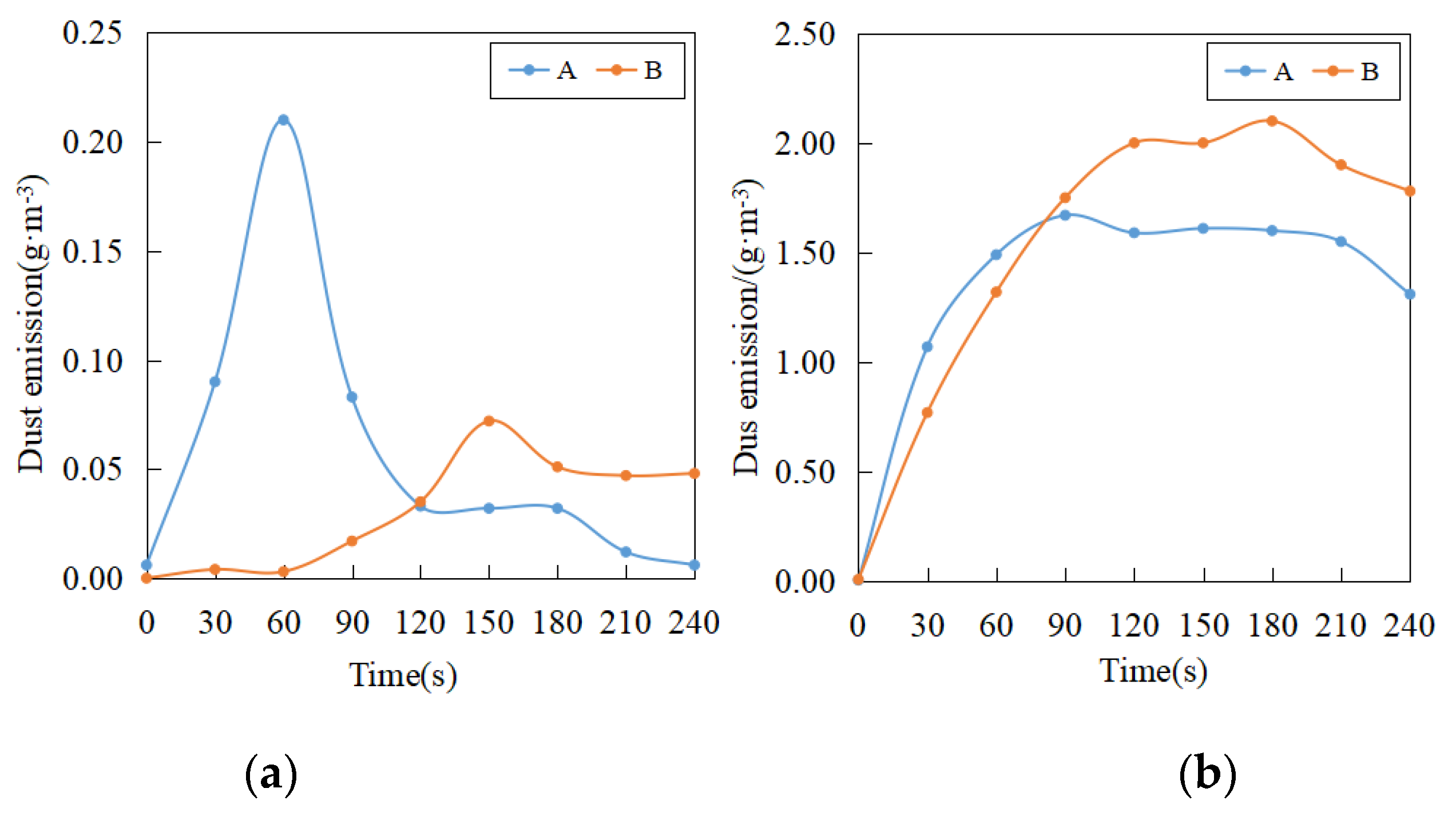
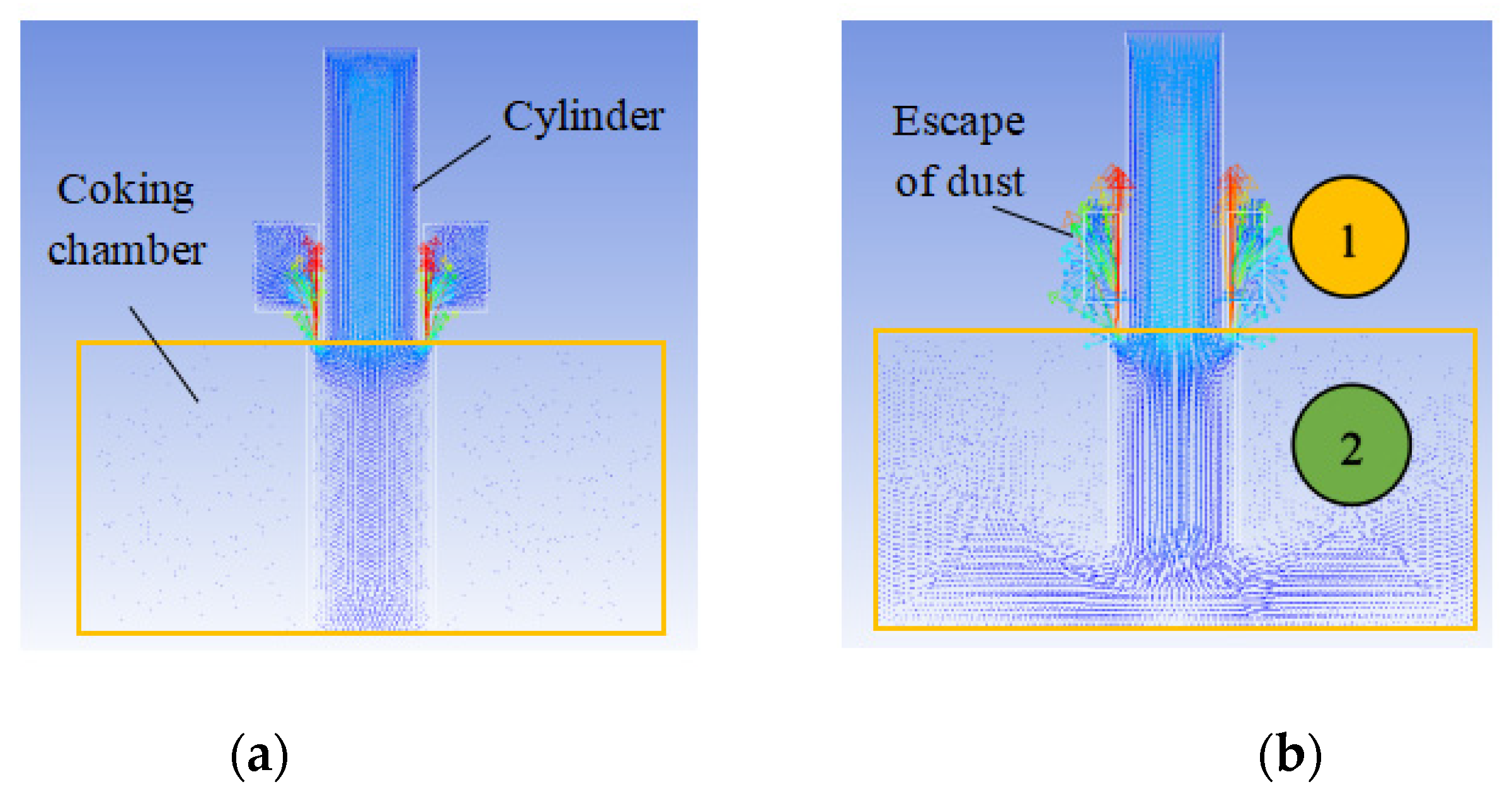

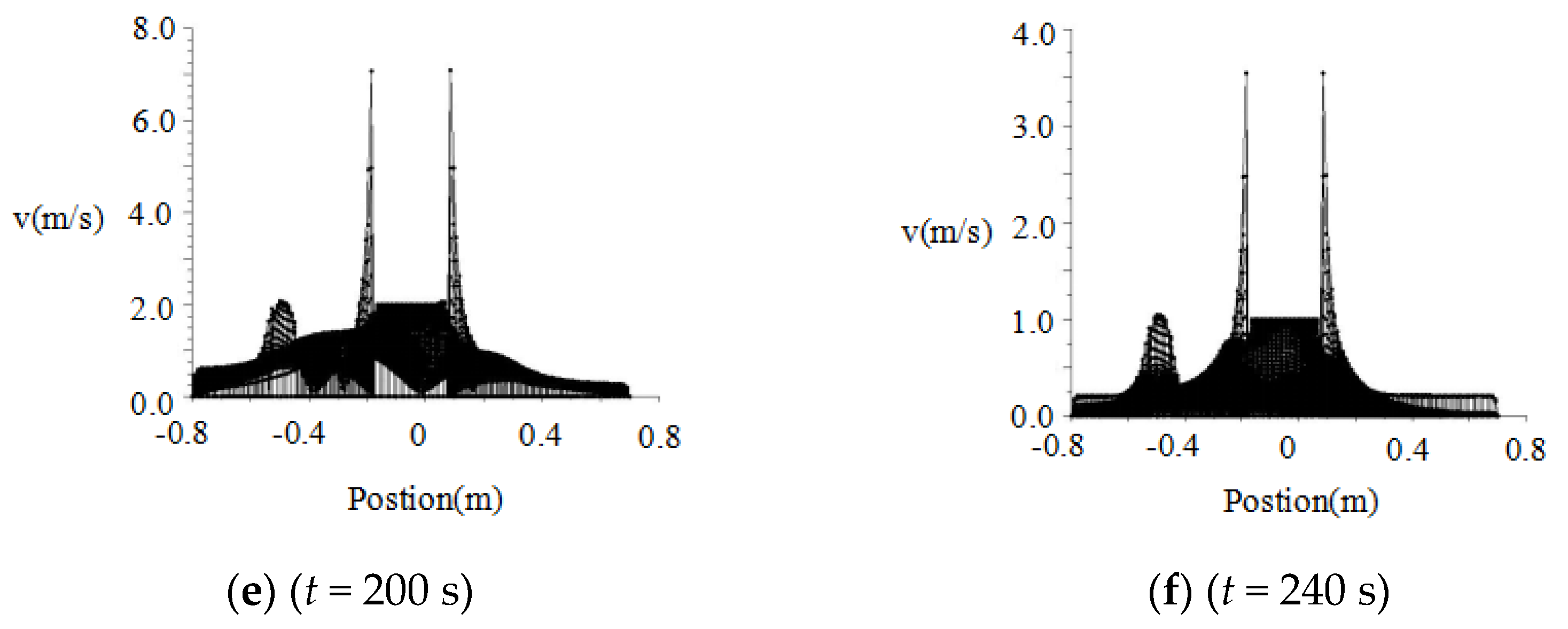
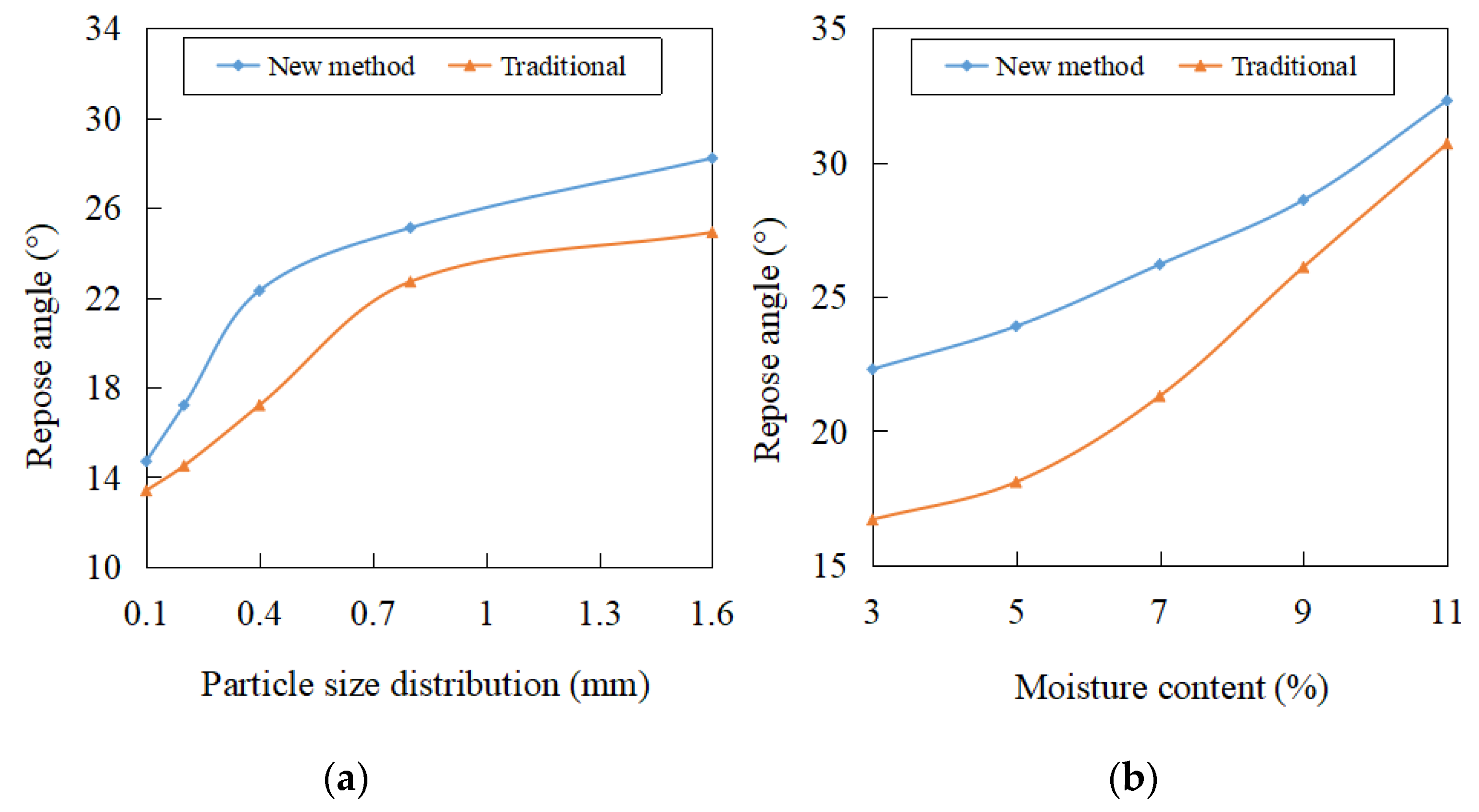

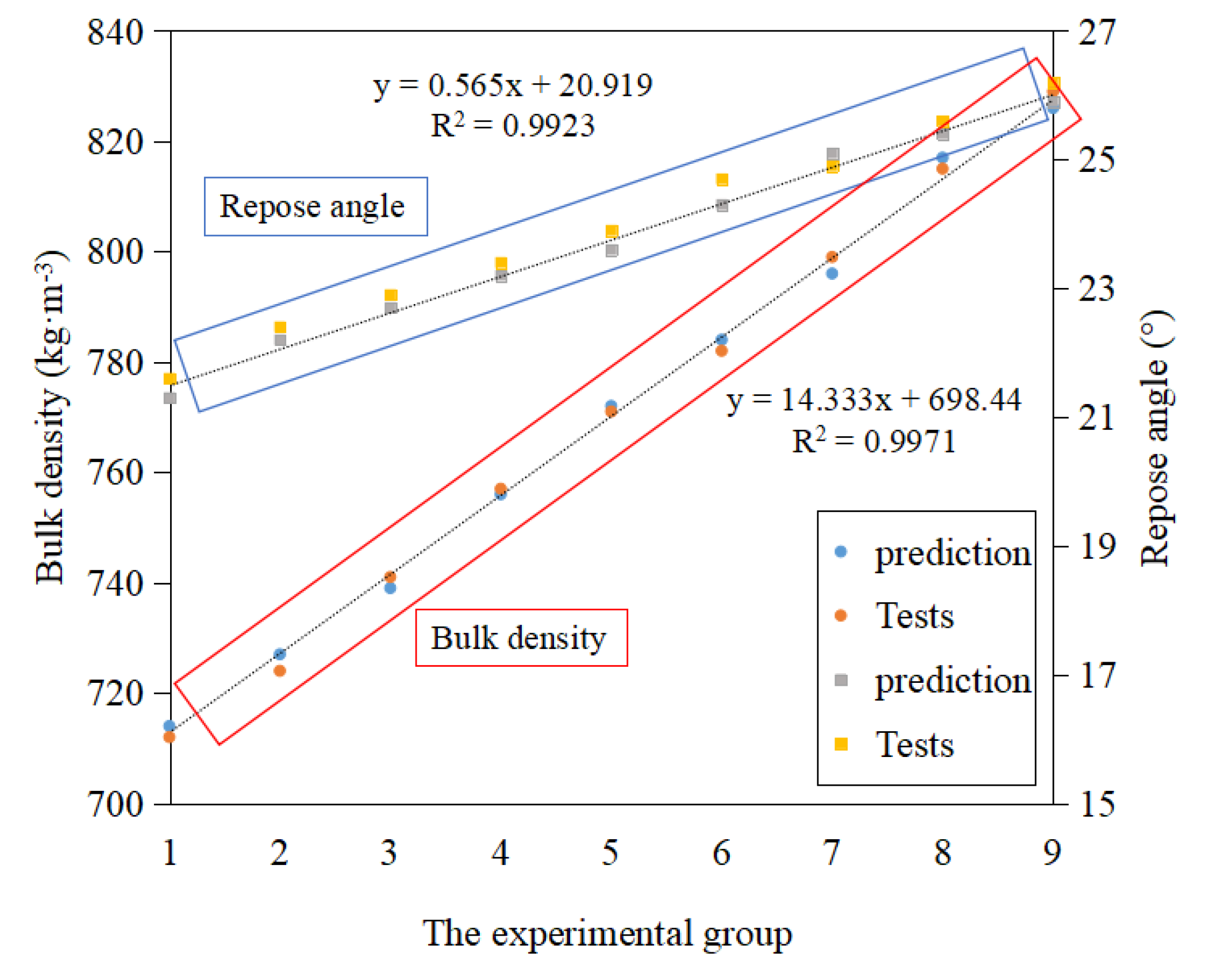
| Samples | Proximate Analysis(wt%, d) | Ultimate Analysis(wt%, daf) | ||||||
|---|---|---|---|---|---|---|---|---|
| Mar | Ad | Vdaf | Fad | C | H | N | S | |
| Xingtai | 10.80 | 7.88 | 36.19 | 19.66 | 86.33 | 5.49 | 1.52 | 0.38 |
| Pingdingshan | 10.44 | 17.02 | 35.42 | 18.27 | 85.65 | 5.66 | 1.56 | 0.51 |
| Tonghua | 10.82 | 16.87 | 33.68 | 18.73 | 84.40 | 5.32 | 1.44 | 0.35 |
| Baotou | 10.21 | 9.22 | 35.97 | 20.09 | 86.32 | 5.86 | 1.32 | 0.66 |
| Materials | Test Temperature (°C) | Thickness (mm) | Heat-Up Time (min) | |
|---|---|---|---|---|
| a | b | 1000 | 1.0 | 1–10 |
| 1.5 | ||||
| 2.0 | ||||
| 2.5 | ||||
| 3.0 | ||||
| Name of Factors | A(mm) | B(%) | C(m·s−1) | D(m) |
|---|---|---|---|---|
| Level 1 | 0.10 | 3 | 0.02 | 0.1 |
| Level 2 | 0.45 | 5 | 0.04 | 0.2 |
| Level 3 | 0.90 | 7 | 0.08 | 0.4 |
| Level 4 | 1.50 | 9 | 0.16 | 0.8 |
| Level 5 | 2.00 | 11 | 0.32 | 1.6 |
| Factors | A | B | C | D | Blank | Blank | |
|---|---|---|---|---|---|---|---|
| ρ | K1 | 707.43 | 789.18 | 783.75 | 758.83 | 745.32 | 745.06 |
| K2 | 754.05 | 769.86 | 755.60 | 774.36 | 745.37 | 748.22 | |
| K3 | 756.66 | 745.11 | 747.65 | 749.32 | 765.17 | 742.61 | |
| K4 | 762.17 | 717.88 | 735.52 | 738.06 | 743.82 | 765.95 | |
| K5 | 763.01 | 721.28 | 720.81 | 722.74 | 743.63 | 742.60 | |
| R | 55.58 | 71.30 | 62.94 | 51.62 | 21.54 | 23.35 | |
| ɑ | K1 | 23.29 | 23.75 | 27.10 | 26.53 | 25.57 | 25.57 |
| K2 | 25.30 | 25.00 | 27.75 | 26.36 | 26.16 | 25.01 | |
| K3 | 26.40 | 26.12 | 26.89 | 26.01 | 26.16 | 26.93 | |
| K4 | 27.00 | 27.12 | 24.94 | 25.82 | 26.17 | 26.36 | |
| K5 | 28.43 | 28.44 | 23.74 | 25.70 | 26.36 | 26.16 | |
| R | 5.14 | 4.70 | 4.00 | 0.83 | 0.79 | 1.92 | |
| Factor | Dependnt Variable | SUM of Square | DOF | MMSE | F | P |
|---|---|---|---|---|---|---|
| A | ρ | 10,912.27 | 4 | 2728.07 | 6.037 | 0.015 |
| ɑ | 74.40 | 4 | 18.60 | 41.129 | 0.000 | |
| B | ρ | 18,998.18 | 4 | 4749.55 | 10.51 | 0.003 |
| ɑ | 66.40 | 4 | 16.60 | 36.71 | 0.000 | |
| C | ρ | 11,145.45 | 4 | 2786.36 | 6.17 | 0.014 |
| ɑ | 56.11 | 4 | 14.03 | 31.02 | 0.000 | |
| D | ρ | 7738.62 | 4 | 1934.66 | 4.28 | 0.038 |
| ɑ | 2.50 | 4 | 0.63 | 1.38 | 0.322 | |
| Error E | ρ | 3615.10 | 8 | 451.89 | ||
| ɑ | 3.62 | 8 | 0.452 | |||
| SUM T | ρ | 14,065,018.95 | 25 | |||
| ɑ | 17,213.98 | 25 |
| Accumulation Parameter | Equation | R2 |
|---|---|---|
| Repose angle | y = 0.565x + 20.919 | 0.9923 |
| Bulk density | y = 14.333x + 698.44 | 0.9971 |
Publisher’s Note: MDPI stays neutral with regard to jurisdictional claims in published maps and institutional affiliations. |
© 2020 by the authors. Licensee MDPI, Basel, Switzerland. This article is an open access article distributed under the terms and conditions of the Creative Commons Attribution (CC BY) license (http://creativecommons.org/licenses/by/4.0/).
Share and Cite
Zhang, Z.; Zhang, S. A New Coking Coal Charging Method for 6 m Top-Charged Coke Oven: System Design and Experiment. Appl. Sci. 2021, 11, 33. https://doi.org/10.3390/app11010033
Zhang Z, Zhang S. A New Coking Coal Charging Method for 6 m Top-Charged Coke Oven: System Design and Experiment. Applied Sciences. 2021; 11(1):33. https://doi.org/10.3390/app11010033
Chicago/Turabian StyleZhang, Ze, and Shuting Zhang. 2021. "A New Coking Coal Charging Method for 6 m Top-Charged Coke Oven: System Design and Experiment" Applied Sciences 11, no. 1: 33. https://doi.org/10.3390/app11010033





